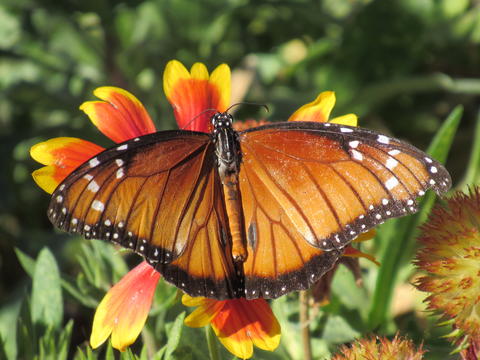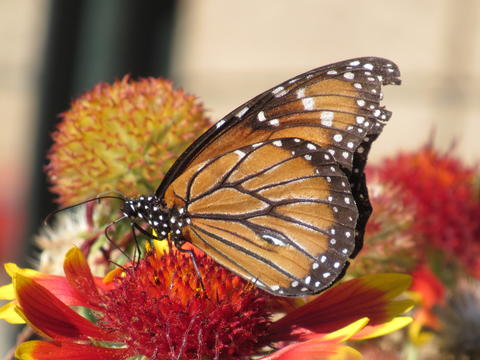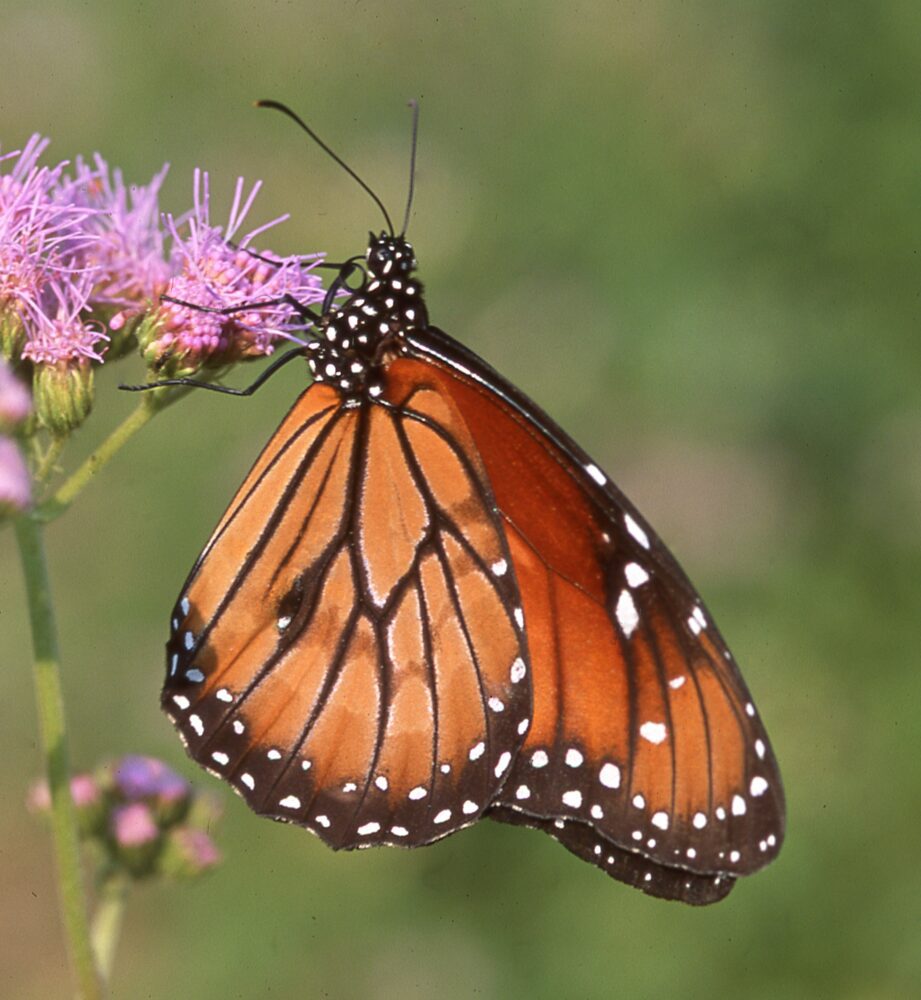by Steven J. Cary and Michael E. Toliver
The Brushfoots (Nymphalidae). This family is our second richest in terms of number of species and perhaps the most variable in terms of sizes, colors, patterns and behaviors. Despite the obvious differences in wing morphology, almost all members share a unifying structural character: on adults, the forelegs are reduced to tiny, brush-like structures, leaving only four functional legs. The exception that proves the rule is female Libytheinae, which have functional forelegs, emphasizing their ancestral status. Many of our most familiar butterflies are members of this family. Pursuant to Pelham’s (2023) catalog, we have ~100 species in ten subfamilies distributed as shown below. Other works may arrange, lump, or divide families in other ways. Updated June 26, 2023
Danainae (Milkweed Butterflies). This largely tropical group has three species in New Mexico. Its members are large, the female foreleg is reduced in size, males have a prominent scent patch and hair pencils that help distribute the scent scales. Larvae eat milkweeds, which are poisonous to vertebrates. Thereby rendered foul-tasting and thus ‘off the menu’ for most vertebrate predators, Danaiine butterflies serve as mimicry models for other butterflies. One species, the Monarch, may be considered the most migratory butterfly in the world. Updated June 22. 2023
- Monarch (Danaus plexippus)
- Queen (Danaus gilippus thersippus),strigosus
- Soldier (Danaus eresimus)
Danaus plexippus (Linnaeus 1758) Monarch (updated June 22, 2023)
Description. Its large size, bright color and sailing flight, not to mention its famously migratory lifestyle, make Danaus plexippus the most recognized butterfly in North America. Above, it is intense orange with black veins; black margins and black apical regions are decorated with a double row of small white spots (its mimic, the Viceroy, has a single row). The HW also lacks the postmedian line of the Viceroy. Ventral colors are pale versions of the dorsal colors. Males have a black scent pad near the hindwing anal angle. Range and Habitat. Monarchs summer in temperate North America and northern Mexico. They usually fly on the prairies and in major river valleys. In New Mexico they occur statewide (all counties), preferring elevations below 8000′. They are not as common in our state as they seem to be in certain eastern states. Life History. The Danaus plexippus life cycle is legendary. Autumn adults are not sexually active, but instead migrate south, often en masse, to overwintering sites in Michoacan, Mexico, or in coastal California. Those that survive winter begin to mate in early March, then depart on a leapfrogging migration northward, with females placing eggs on milkweeds along the way. Offspring of this brood mature in early summer and continue the northward expansion, mating and laying eggs as far away as eastern Canada. In the warmth of mid-summer, a full life cycle may take only a month. Larvae eat milkweeds (Asclepiadaceae). Probably any species will do in a pinch, but preferred species in New Mexico seem to include Asclepias subverticillata, Asclepias speciosa and Asclepias latifolia. Flight. Northward migrants from Mexico pass through New Mexico in March and April, placing eggs as they go. Summer generation New Mexico adults emerge in June and July. Late summer adults and southward migrants from central North America create peak numbers here in September and October, when they sometimes roost in numbers in southeastern parts of our state. Extreme observation dates are March 2 and December 8. Certain oases in southern New Mexico, such as Rattlesnake Springs (Ed), can produce Monarchs from March to October. Comments. The Monarch has been considered a distasteful Batesian model for the Viceroy (Limenitis archippus), whose appearance mimics the Monarch, thus gaining protection from bird predators. However, recent research suggests that Viceroy and Monarch are Müllerian mimics, in which two similarly distasteful butterflies adopt a single advertising theme to help their audience (birds) get the message more quickly, and thus each species loses fewer individuals to “educate” naïve predators.
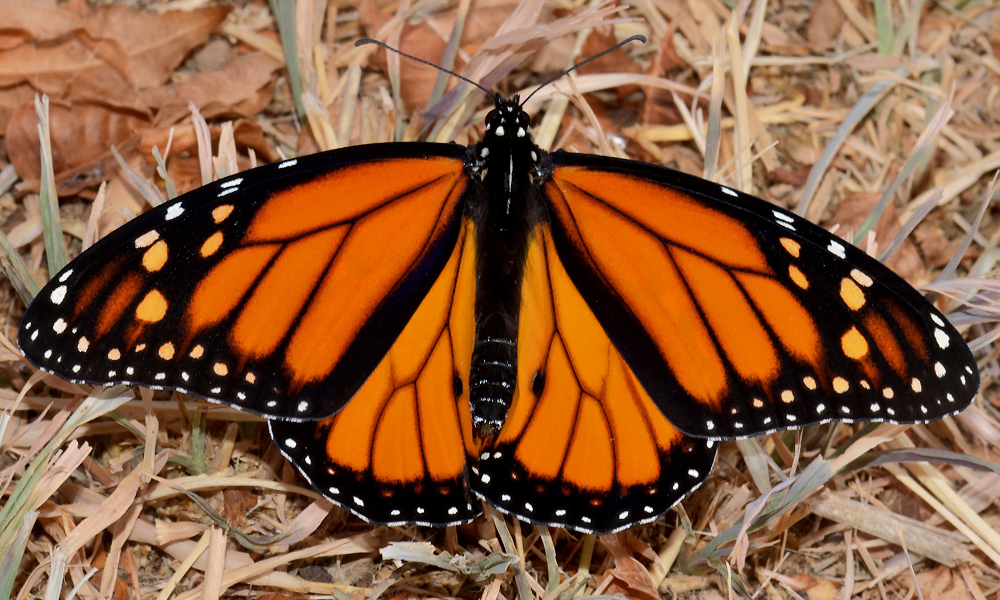
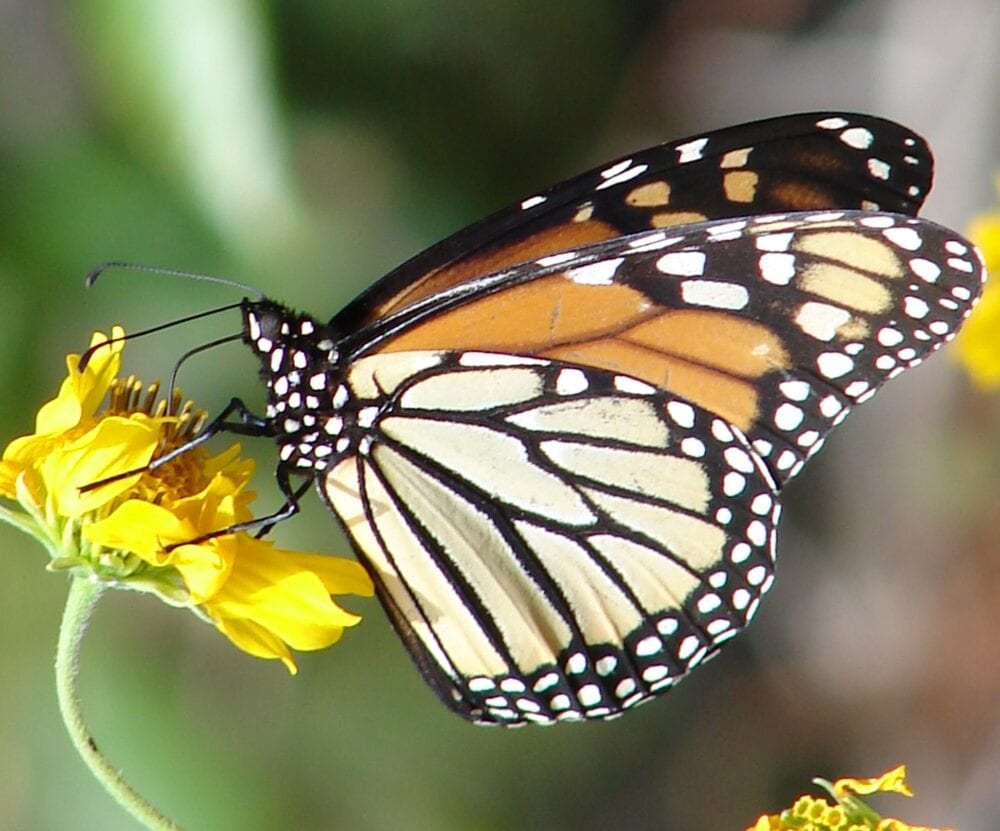
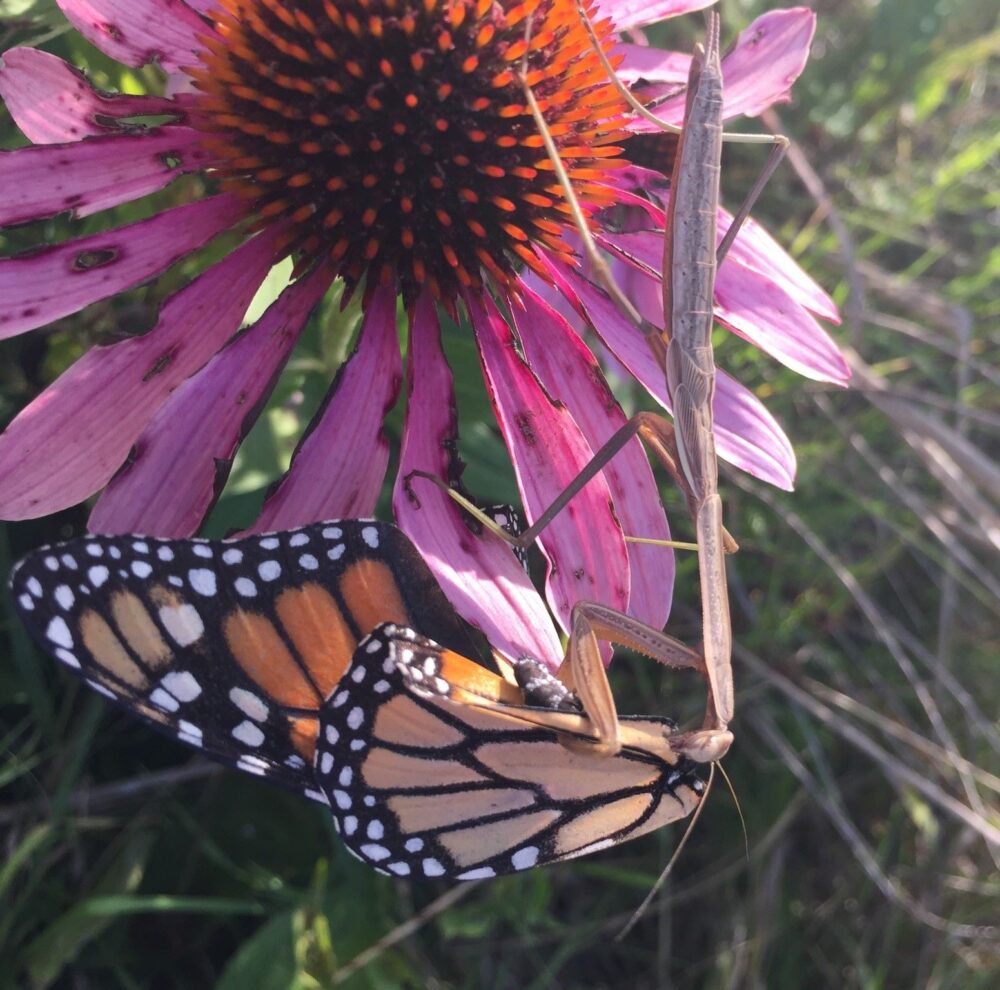
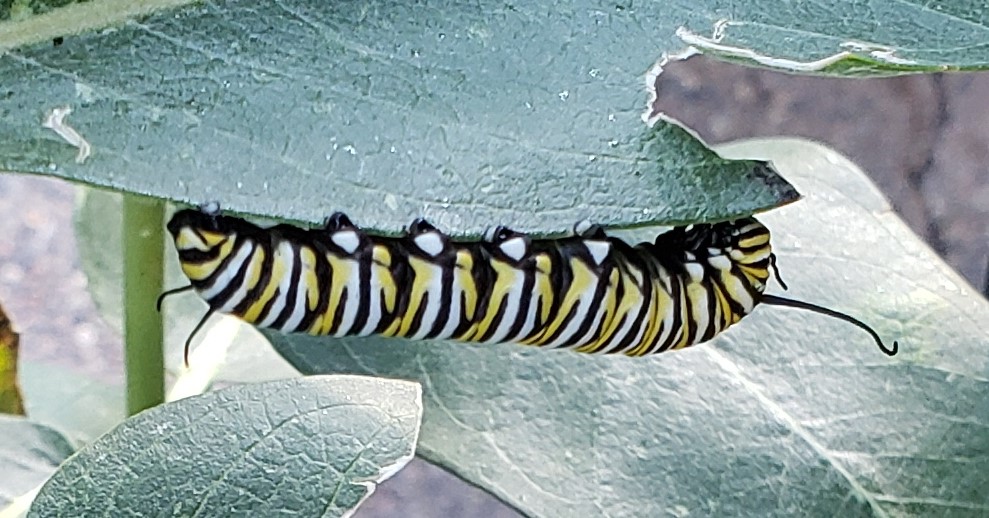
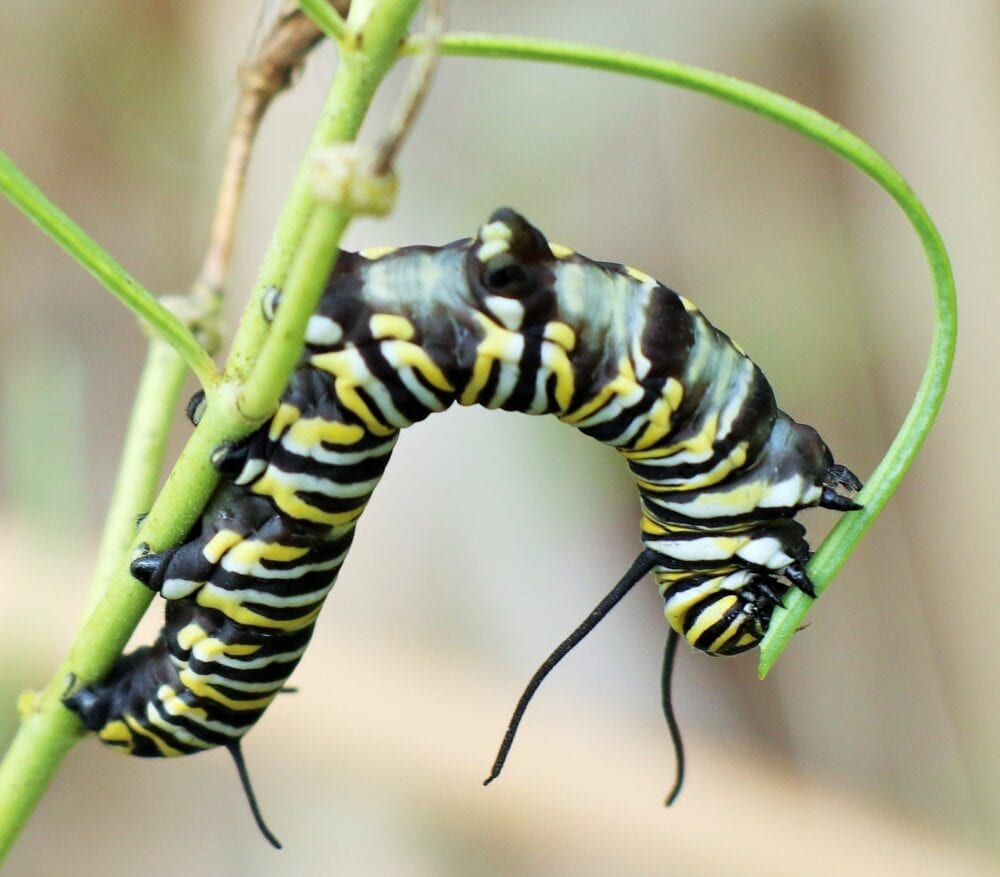
Danaus gilippus (Cramer 1775) Queen (updated June 22, 2023)
Description. Her Royal Highness, the Queen, is somewhat smaller than His Majesty, the Monarch. Danaus gilippus is a subdued mahogany compared to the very orange Monarch. Postmedian white spots decorate the forewing, more so than on Monarchs. Dorsal hindwing veins are overscaled with gray in most New Mexico individuals. The dark marginal border has two rows of white spots beneath, distinguishing the Queen from its SW mimic, the Desert Viceroy which has a single row. Queens also lack dark the postmedian line on the HW, characteristic of the Desert Viceroy. As with all Danaiines, males have a scent patch near the hindwing’s posterior edge. Range and Habitat. Queen is at home in South America, Central America and Mexico. It is a permanent breeding resident in coastal Mexico north to southeast California, south Texas and south Florida. Adults are wanderers, not true round-trip migrants as far as we know, and are reported from most of the continental US, if mostly as vagrants. Queens breed most of the warm season in southern New Mexico; strays are known statewide below 8000′ elevation, with decreasing frequency toward the north. Life History. Danaus gilippus larvae eat milkweeds including various Asclepias species, but also plants in these genera: Matelea, Stapelia, Sarcostemma and Cynanchum (all Asclepiadaceae). Pupae are suspended from the bottoms of leaves. Flight. Queens manage to complete two or three broods before the New Mexico winter eliminates holdouts. Extreme observation dates are March 26 and December 10. Peak numbers are in mid- and late-summer, during the monsoon season. Adults sail over flowery meadows and in canyons. They are avid nectar feeders and may roost in small groups overnight. Comments. We have the southwestern race, Danaus gilippus thersippus (H. Bates 1863), which was called D. g. strigosus (H. Bates 1864) until it was recently synonymized (Austin 1998). Called the Desert Queen, D. g. thersippus is a mimicry model for Limenitis archippus obsoleta, our Desert Viceroy.
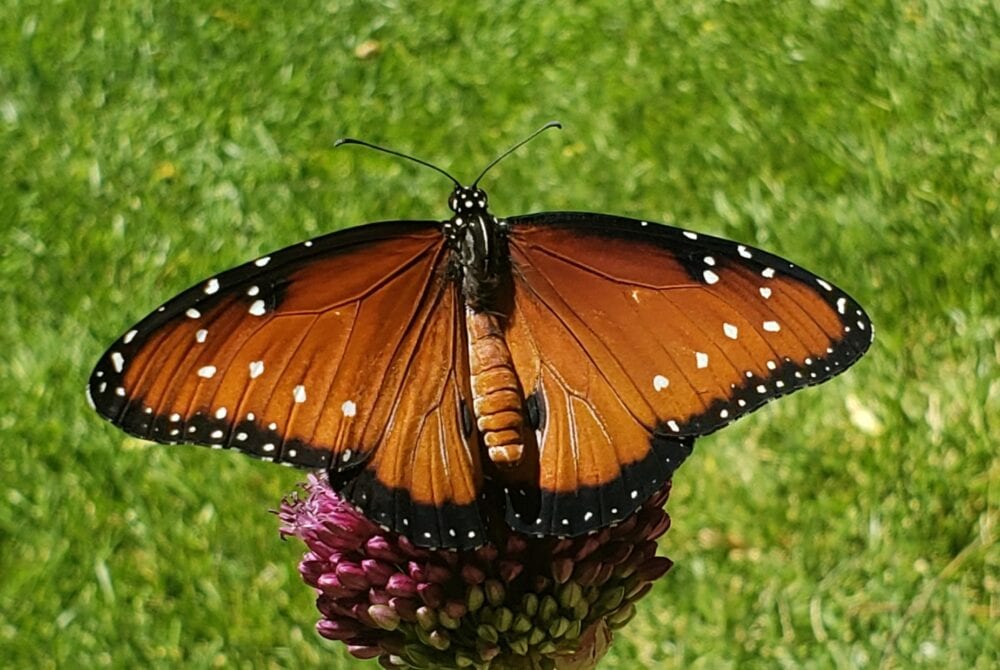
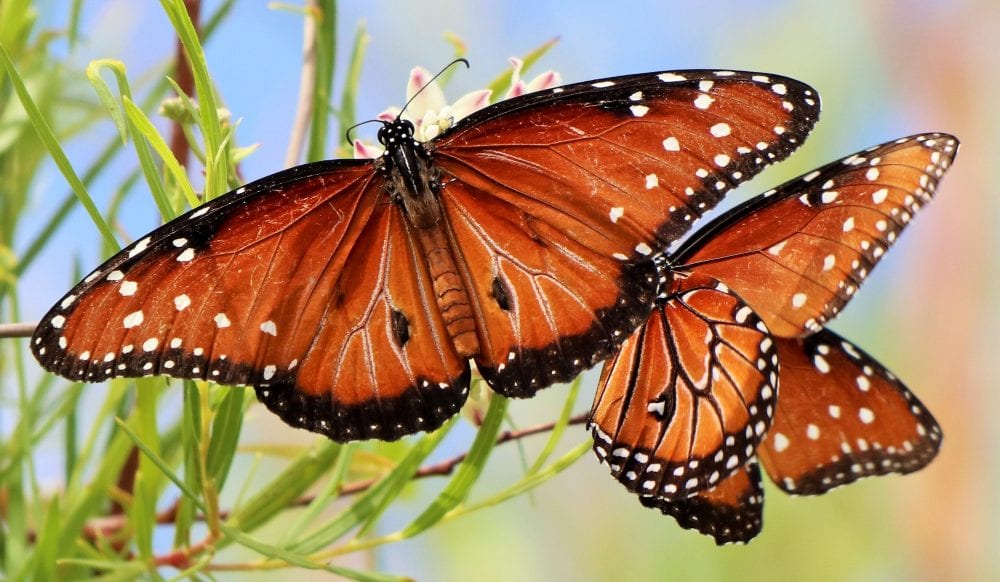
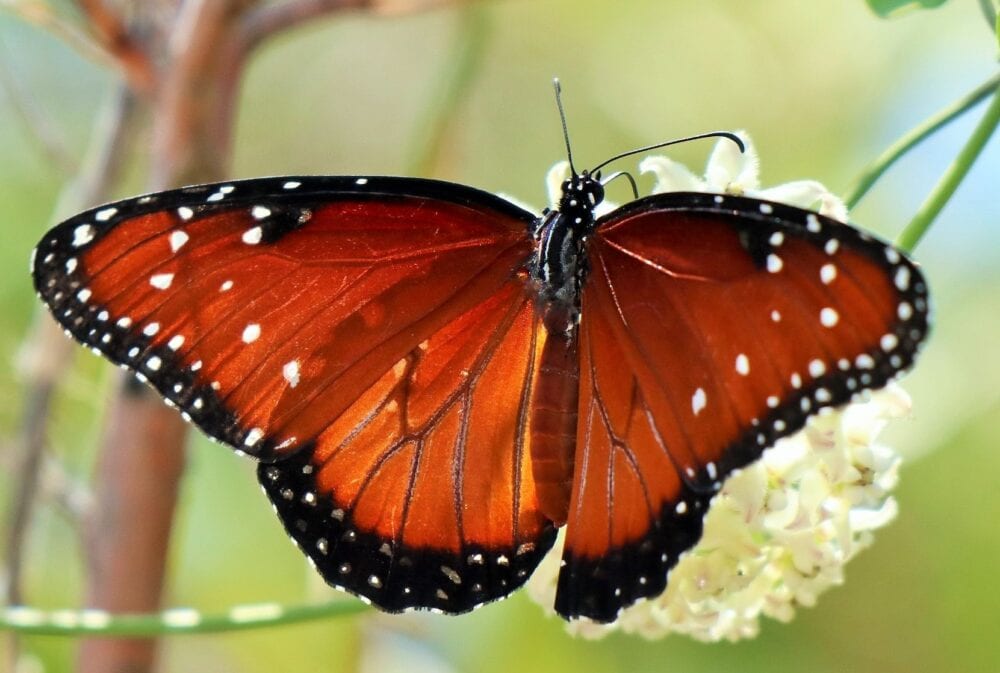
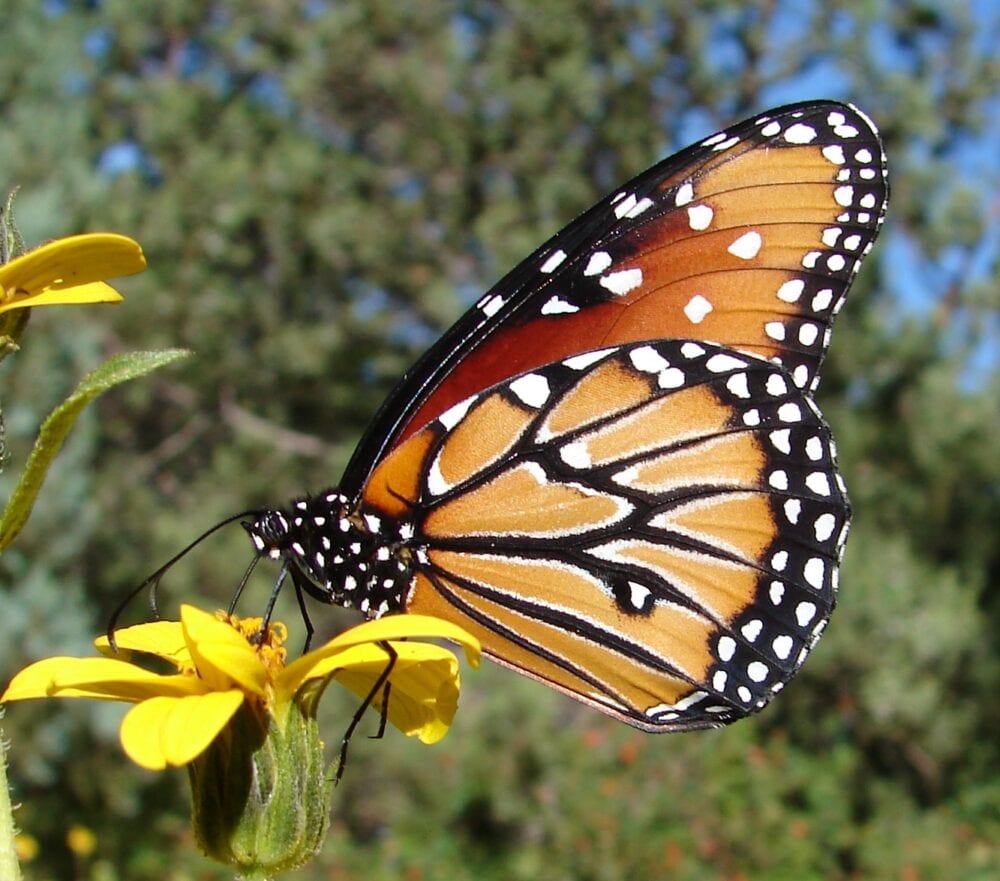
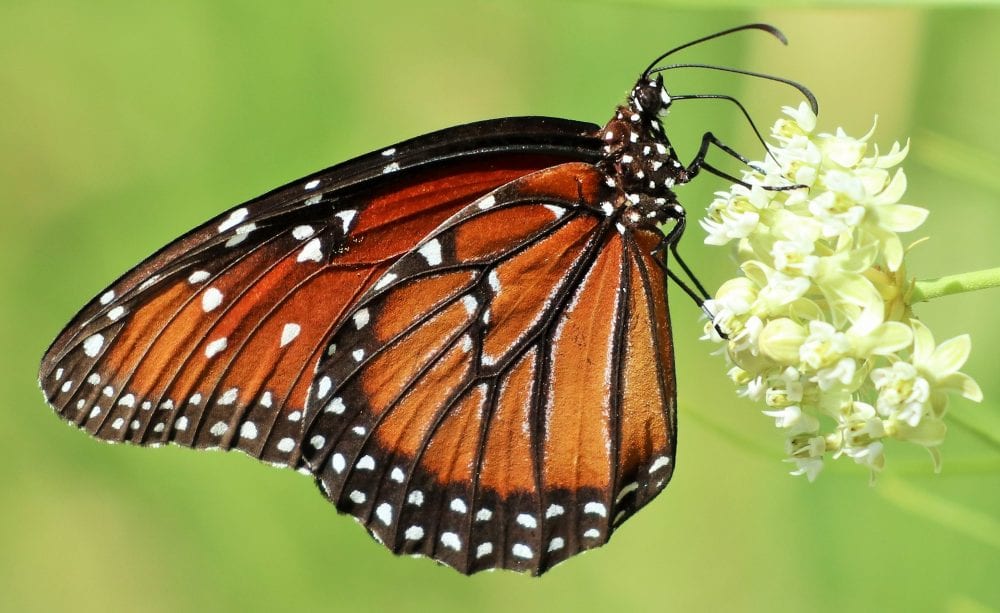
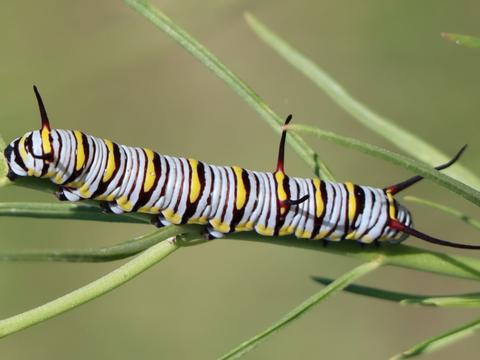
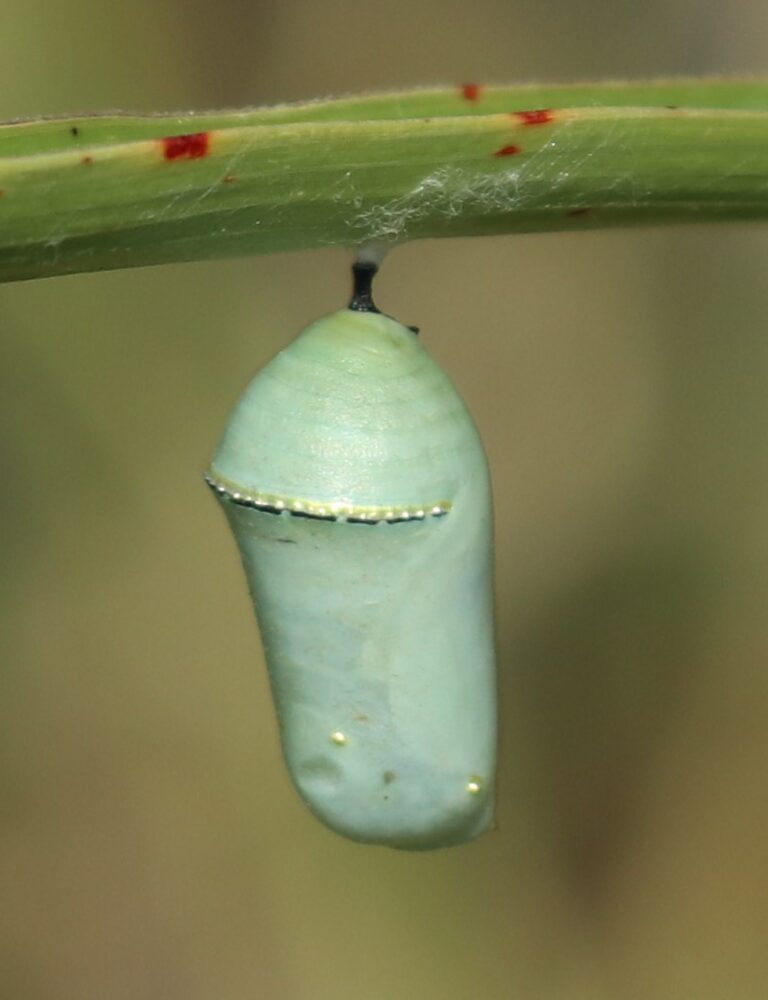
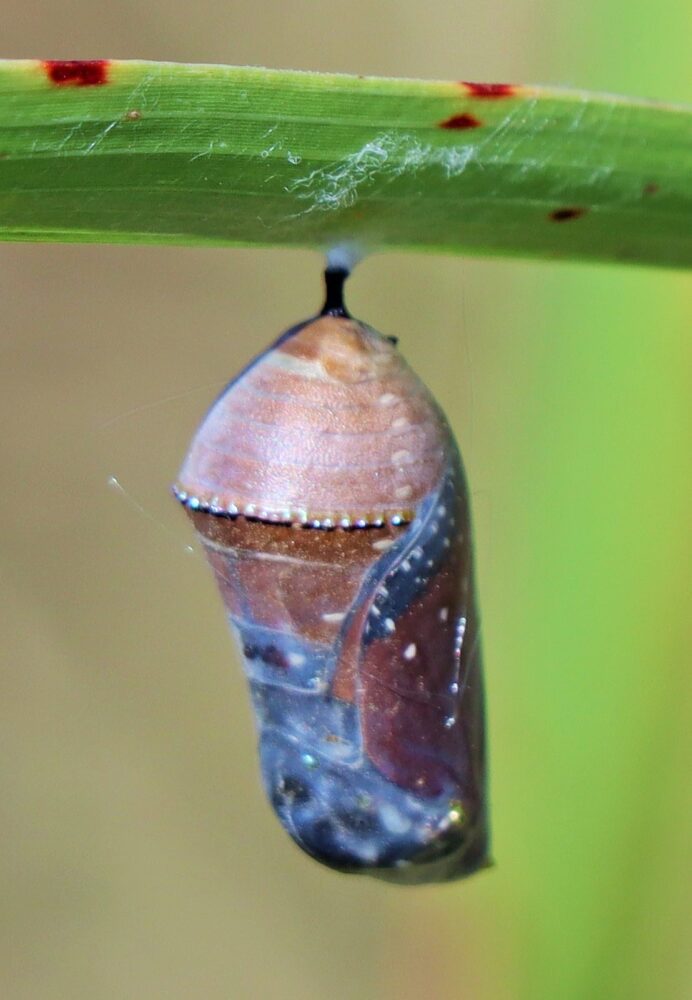
Danaus eresimus (Cramer 1777) Soldier (updated June 22, 2023)
Description. The Soldier is easily confused with the Queen, but it is rarely reported from New Mexico. Compared to Queen, Soldier’s forewing postmedian white spots are restricted to the postdiscal area, and the forewing has fewer white marks in general. The hindwing underside has a faint, pale postmedian watermark. Range and Habitat. Soldiers breed in South America, Central America and Mexico. It is a stray in south Texas, southern Arizona and, rarely, southwest New Mexico. Life History. Larval hosts are milkweeds (Asclepiadaceae), as expected, but there is no evidence of reproduction in our state. Flight. It is most likely to appear during and after the summer thunderstorm season. Comments. There are three documented New Mexico records: from along Animas Creek (Hi) on 2 October 1990 (K. Roever), from Leasburg Dam St. Pk. (DA) on 23 June 2013 (N. Arthur), and from the Organ Mountains (DA) on 14 November 2016 (R. Wu). Soldier seems to be rare in New Mexico, but it so closely resembles the routine Queen that it may be overlooked.
